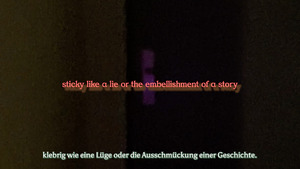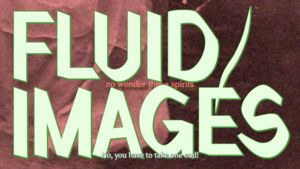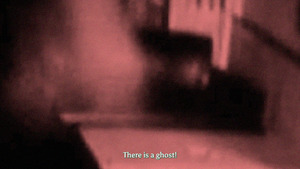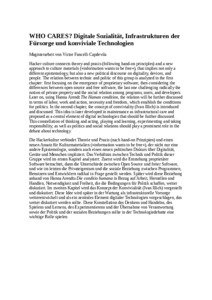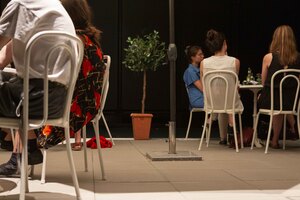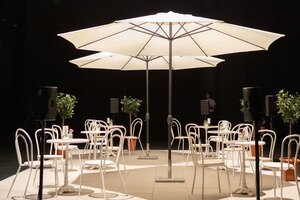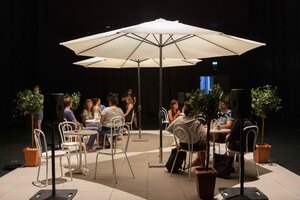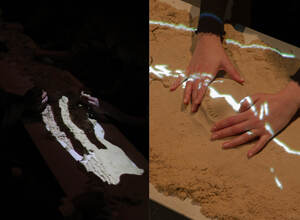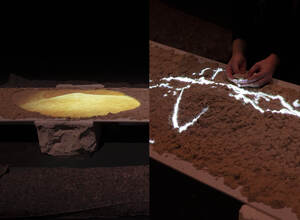"Wintersemester 2022/2023"
| Begriff | Wintersemester 2022/2023 |
| Metakey | Semester (institution:semester) |
| Typ | Keyword |
| Vokabular | HfG |
76 Inhalte
- Seite 1 von 7
I used to think (dt.: Ich habe immer gedacht)
- Titel
- I used to think (dt.: Ich habe immer gedacht)
- Titel
- I used to think (dt.: Ich habe immer gedacht)
- Titel (en)
- I used to think
- Urheberrechtshinweis
- © Hanna Franke
- Rechtsschutz/Lizenz
- Freigabe Nutzung HfG
- Medien-Beschreibung
- Videostill
- Alternativ-Text (de)
- Videostill: Dunkler verschwommener Hintergrund. In der Mitte des Bildes steht in lachsfarbener Schrift: „sticky like a lie or the embellishment of a story.“ Am Bildrand unten steht in heller Schrift: „klebrig wie eine Lüge oder die Ausschmückung einer Geschichte.“
- Alternativ-Text (en)
- Video still: dark, blurred background. In the middle of the picture, in salmon-colored lettering, it says: “sticky like a lie or the embellishment of a story”. At the bottom edge of the picture, in light-colored lettering, it says: “klebrig wie eine Lüge oder die Ausschmückung einer Geschichte.”
- Projektleiter/in
- Semester
- Studiengang
- Typ der Abschlussarbeit
- Importiert am
- 31.10.2024
- Übergeordnete Sets
- 1
I used to think (dt.: Ich habe immer gedacht)
- Titel
- I used to think (dt.: Ich habe immer gedacht)
- Titel
- I used to think (dt.: Ich habe immer gedacht)
- Titel (en)
- I used to think
- Urheberrechtshinweis
- © Hanna Franke
- Rechtsschutz/Lizenz
- Freigabe Nutzung HfG
- Beziehung/Funktion
- Alternativ-Text (de)
- Über das gesamte Bild der Schriftzug „Fluid / Images“ in grün. In der Mitte des Bildes steht klein, in lachsfarbener Schrift „no wonder these spirits“. Am unteren Bildrand steht klein, in heller Schrift: „No, you have to take one end!“. Im Hintergrund ein verpixeltes, lachsfarbenes Foto.
- Alternativ-Text (en)
- The lettering "Fluid / Images" in green across the entire frame. In the middle of the picture is the text “no wonder these spirits”. At the bottom of the picture is the text “No, you have to take one end!” in light lettering. In the background is a pixelated, salmon-colored photo.
- Projektleiter/in
- Semester
- Studiengang
- Typ der Abschlussarbeit
- Importiert am
- 15.11.2024
- Übergeordnete Sets
- 1
I used to think (dt.: Ich habe immer gedacht)
- Titel
- I used to think (dt.: Ich habe immer gedacht)
- Titel
- I used to think (dt.: Ich habe immer gedacht)
- Titel (en)
- I used to think
- Urheberrechtshinweis
- © Hanna Franke
- Rechtsschutz/Lizenz
- Freigabe Nutzung HfG
- Beziehung/Funktion
- Alternativ-Text (de)
- Verpixeltes, lachsfarbenes Foto mit unklaren, schwarzen Schatten. Am unteren Bildrand steht auf Englisch: „Da ist ein Geist!.“
- Alternativ-Text (en)
- Blurred, salmon-colored image with black shadows. At the bottom of the picture it says “There is a ghost!”.
- Projektleiter/in
- Semester
- Studiengang
- Typ der Abschlussarbeit
- Importiert am
- 31.10.2024
- Übergeordnete Sets
- 1
Kurzbeschreibung von Who cares?
- Titel
- Kurzbeschreibung von Who cares?
- Titel (en)
- Who cares?
- Untertitel des Projekts/Werks (en)
- Digital sociality, care infrastructure and convivial technology
- Autor/in
- Beschreibung (de)
- Die Hackerkultur verbindet Theorie und Praxis (nach hand-on Prinzipien) und einen neuen Ansatz für Kulturmaterialien (»information wants to be free«), der nicht nur eine andere Epistemologie, sondern auch einen neuen politischen Diskurs über Digitalität, Geräte und Menschen impliziert. Das Verhältnis zwischen Technik und Politik dieser Gruppe wird im ersten Kapitel analysiert: Zuerst wird die Entstehung proprietärer Software betrachtet, dann die Unterschiede zwischen Open Source und freier Software, und wie im letzten die Privateigentum und die soziale Beziehung zwischen Programmen, Benutzern und Entwicklern radikal in Frage gestellt werden. Später wird diese Beziehung anhand von Hanna Arendts _Die conditio humana_ in Bezug auf Arbeit, Herstellen und Handlen, Notwendigkeit und Freiheit, die die Bedingungen für Politik schaffen, weiter diskutiert. Im zweiten Kapitel wird das Konzept der Konvivialität (Ivan Illich) vorgestellt und diskutiert. Diese Idee wird später in der Wartung als infrastrukturelle Vorsorge weiterentwickelt und als ein zentrales Element digitaler Technologien vorgeschlagen, das weiter diskutiert werden sollte. Diese Konstellation des Denkens und Handelns, des Spielens und Lernens, des Experimentierens und der Übernahme von Verantwortung sowie der Politik und der sozialen Beziehungen sollte in der Technologiedebatte eine wichtige Rolle spielen.
- Beschreibung (en)
- Hacker culture connects theory and praxis (following hand-on principles) and a new approach to culture materials (»information wants to be free«), that implies not only a different epistemology, but also a new political discourse on digitality, devices, and people. The relation between technic and politic of this group is analyzed in the first chapter: first focusing on the emergence of proprietary software; then considering the differences between open source and free software, the last one challenging radically the notion of private property and the social relation among programs, users, and developers. Later on, reading Hanna Arendts "The Human condition", the relation will be further discussed in terms of labor, work and action, necessity and freedom, which establish the conditions for politics. In the second chapter, the concept of conviviality (Ivan Illich) is introduced and discussed. This idea is later developed in maintenance as infrastructural care and proposed as a central element of digital technologies that should be further discussed. This constellation of thinking and acting, playing and learning, experimenting and taking responsibility, as well as politics and social relations should play a prominent role in the debate about technology.
- Typ des Projekts/Werks
- Schlagworte
- Datierung
- 30.09.2023
- Sprache
- Titel
- Kurzbeschreibung von Who cares?
- Titel (en)
- Project descritption of Who Cares?
- Urheberrechtshinweis
- Víctor Fancelli Capdevila
- Rechtsschutz/Lizenz
- Freigabe Nutzung HfG
- Medienersteller/in
- Beziehung/Funktion
- Medien-Beschreibung
- Zusammenfassung des Projekts Who cares?
- Projektleiter/in
- Semester
- Studiengang
- Typ der Abschlussarbeit
- Importiert am
- 02.06.2024
- Übergeordnete Sets
- 1
Monika H. am Tasten und Formen
- Titel
- Monika H. am Tasten und Formen
- Autor/in
- Kategorie
- Typ des Projekts/Werks
- Schlagworte
- Datierung
- Februar 2023
- Titel
- Monika H. am Tasten und Formen
- Urheberrechtshinweis
- © Saskia van der Meer
- Freigabe Nutzung HfG
- Medienersteller/in
- Projektleiter/in
- Semester
- Studiengang
- Typ der Abschlussarbeit
- Importiert am
- 05.10.2024
- Übergeordnete Sets
- 1
Monika H.'s Bär (Rückansicht)
- Titel
- Monika H.'s Bär (Rückansicht)
- Autor/in
- Kategorie
- Typ des Projekts/Werks
- Schlagworte
- Datierung
- Februar 2023
- Titel
- Monika H.'s Bär (Rückansicht)
- Urheberrechtshinweis
- © Saskia van der Meer
- Freigabe Nutzung HfG
- Medienersteller/in
- Medien-Beschreibung
- Monika H. ist eine blinde Künstlerin, die leidenschaftlich Tiere modelliert. Dies ist beispielsweise die Rückansicht eines Bären.
- Projektleiter/in
- Semester
- Studiengang
- Typ der Abschlussarbeit
- Importiert am
- 05.10.2024
- Übergeordnete Sets
- 1
Nichts, was uns passiert oder Genügend Anlass zur Erhebung der öffentlichen Klage
- Titel
- Nichts, was uns passiert oder Genügend Anlass zur Erhebung der öffentlichen Klage
- Autor/in
- Kategorie
- Schlagworte
- Titel
- Nichts, was uns passiert oder Genügend Anlass zur Erhebung der öffentlichen Klage
- Titel (en)
- Nothing that happens to us or Sufficient reason to file a public complaint
- Urheberrechtshinweis
- © Anja Ruschival
- Rechtsschutz/Lizenz
- Freigabe Nutzung HfG
- Medienersteller/in
- Beziehung/Funktion
- Projektleiter/in
- Semester
- Studiengang
- Typ der Abschlussarbeit
- Importiert am
- 24.06.2024
- Übergeordnete Sets
- 1
Nichts, was uns passiert oder Genügend Anlass zur Erhebung der öffentlichen Klage
- Titel
- Nichts, was uns passiert oder Genügend Anlass zur Erhebung der öffentlichen Klage
- Autor/in
- Kategorie
- Schlagworte
- Titel
- Nichts, was uns passiert oder Genügend Anlass zur Erhebung der öffentlichen Klage
- Titel (en)
- Nothing that happens to us or Sufficient reason to file a public complaint
- Urheberrechtshinweis
- © Anja Ruschival
- Rechtsschutz/Lizenz
- Freigabe Nutzung HfG
- Medienersteller/in
- Beziehung/Funktion
- Projektleiter/in
- Semester
- Studiengang
- Typ der Abschlussarbeit
- Importiert am
- 24.06.2024
- Übergeordnete Sets
- 1
Nichts, was uns passiert oder Genügend Anlass zur Erhebung der öffentlichen Klage
- Titel
- Nichts, was uns passiert oder Genügend Anlass zur Erhebung der öffentlichen Klage
- Autor/in
- Kategorie
- Schlagworte
- Titel
- Nichts, was uns passiert oder Genügend Anlass zur Erhebung der öffentlichen Klage
- Titel (en)
- Nothing that happens to us or Sufficient reason to file a public complaint
- Urheberrechtshinweis
- © Anja Ruschival
- Rechtsschutz/Lizenz
- Freigabe Nutzung HfG
- Medienersteller/in
- Beziehung/Funktion
- Projektleiter/in
- Semester
- Studiengang
- Typ der Abschlussarbeit
- Importiert am
- 24.06.2024
- Übergeordnete Sets
- 1
Nichts, was uns passiert oder Genügend Anlass zur Erhebung der öffentlichen Klage
- Titel
- Nichts, was uns passiert oder Genügend Anlass zur Erhebung der öffentlichen Klage
- Autor/in
- Kategorie
- Schlagworte
- Titel
- Nichts, was uns passiert oder Genügend Anlass zur Erhebung der öffentlichen Klage
- Titel (en)
- Nothing that happens to us or Sufficient reason to file a public complaint
- Urheberrechtshinweis
- © Anja Ruschival
- Rechtsschutz/Lizenz
- Freigabe Nutzung HfG
- Medienersteller/in
- Beziehung/Funktion
- Projektleiter/in
- Semester
- Studiengang
- Typ der Abschlussarbeit
- Importiert am
- 24.06.2024
- Übergeordnete Sets
- 1
Projektionen während der Reading Performance
- Titel
- Projektionen während der Reading Performance
- Autor/in
- Kategorie
- Typ des Projekts/Werks
- Schlagworte
- Datierung
- Februar 2023
- Titel
- Projektionen während der Reading Performance
- Urheberrechtshinweis
- © Saskia van der Meer
- Freigabe Nutzung HfG
- Medienersteller/in
- Abgebildete Personen
- Projektleiter/in
- Semester
- Studiengang
- Typ der Abschlussarbeit
- Importiert am
- 05.10.2024
- Übergeordnete Sets
- 1
Projektionen während der Reading Performance
- Titel
- Projektionen während der Reading Performance
- Autor/in
- Kategorie
- Typ des Projekts/Werks
- Schlagworte
- Datierung
- Februar 2023
- Titel
- Projektionen während der Reading Performance
- Urheberrechtshinweis
- © Saskia van der Meer
- Freigabe Nutzung HfG
- Medienersteller/in
- Projektleiter/in
- Semester
- Studiengang
- Typ der Abschlussarbeit
- Importiert am
- 05.10.2024
- Übergeordnete Sets
- 1
